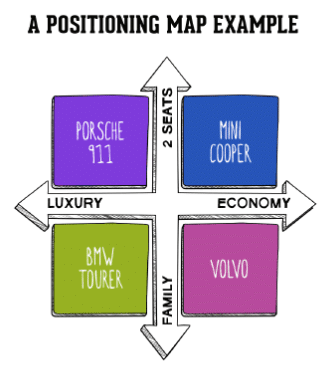Market Segmentation, Targeting & Positioning | Crash Course for UGC NET Commerce PDF Download
Introduction
- The STP marketing model stands for Segmentation, Targeting, and Positioning. It is a well-known strategy used in today's marketing.
- This model is one of the most popular in the field, with many marketing leaders recognizing its role in creating effective and clear communication.
- The focus of STP marketing is on being commercially effective. It involves choosing the most important customer groups for a business.
- After identifying these groups, the next step is to create a marketing mix and a product positioning strategy tailored to each group.
- With the ongoing growth in Martech, there are more chances to enhance segmentation, targeting, and positioning.
- Whether you are new to STP or have a lot of experience, it is beneficial to review and ensure you are making the most of every opportunity to reach, connect with, convert, and engage your customers.
The STP marketing model

The STP model is important for creating marketing communications plans because it helps marketers focus on key messages and craft personalized, relevant communications for different audiences.
This model involves a three-step process:
- Market Segmentation: This step is about dividing the market into different groups based on shared characteristics. The goal is to find a way to categorize your target customers and identify key traits that set each segment apart.
- Market Targeting: After identifying the segments, assess the potential and business appeal of each group. This helps in deciding which segments to focus on for your marketing efforts.
- Product Positioning: For the segments you choose to target, create a clear positioning strategy. This includes developing a tailored marketing mix that reflects the specific needs and preferences of each segment.
STP marketing as a planning tool
- Segmentation, targeting, and positioning is a marketing method that focuses on the audience instead of the product. This approach helps to send messages that are more relevant to groups of people who are likely to be interested in what you offer.
- The STP model is an important tool for strategy and planning. It is part of our RACE Planning Framework, which helps marketers, managers, and business owners develop a 90-day marketing plan for each step of their marketing process.
- Although STP is a part of planning, its advantages extend to the various types of customers you connect with, engage, and convert into buyers.
Applying Segmentation, Targeting and Positioning to digital communications
- STP marketing is also important in digital marketing at a detailed communication level.
- Using marketing personas can help create more relevant digital messages, as shown by different email customer segmentation methods.
- A visual from Dave Chaffey in his book, Digital Marketing: Strategy, Implementation and Practice, illustrates how Segmentation, Targeting, and Positioning apply to digital marketing strategies.
- This visual highlights that digital channels provide new ways to reach audiences that were not available before, but it’s important to allocate enough budget for these efforts.
- Examples include:
- Search intent: This refers to what searchers type when they are looking to compare products they want to buy.
- Interest-based targeting on platforms like Facebook, where you can find people interested in topics like Gardening, Gym memberships, or Golf.
- Email personalization and on-site personalization based on user profiles and behaviors, such as the content they have engaged with.
- There are also new ways to make a brand more attractive by providing different types of value to consumers, based on a digital value proposition or what Jay Baer calls Youtility.
- This can be achieved through content or interactive tools on websites or mobile applications.
How to use STP marketing?
Through segmentation, you can spot specific groups with unique needs, find new customers in established markets, and send more targeted marketing messages.
Each segment has similar needs, so marketing messages should be tailored for each group to highlight relevant benefits and features instead of using a one-size-fits-all approach. This method is more effective, delivering the right message to the same audience rather than spreading it too thin.
You can categorize your current markets using almost any factor, as shown in the examples below:
Demographics:
- This involves dividing by various factors like age, gender, income, education, ethnicity, marital status, household size, length of residence, type of residence, or profession.
- For example, Firefox targets a younger male audience with their trendy products, while Moshi Monsters focuses on parents looking for fun and safe educational experiences for their children.
Psychographics:
This refers to understanding customers' personalities and emotions, which are linked to their buying behavior, including their attitudes, lifestyles, hobbies, and risk preferences.
While demographics tell you "who" your customer is, psychographics explain "why" they buy.
You can gather psychographic data in several ways:
- Interviews: Talk to a few people who represent your target audience. In-depth interviews can provide valuable insights, though they can be costly and not always representative.
- Surveys: These allow you to reach more people than interviews, but the insights may be less detailed.
- Customer data: Analyze what your customers typically buy from you, such as data from loyalty programs or online purchase history, to understand their preferences and potential buying triggers.
For example, Virgin Holidays uses segmentation to market their holidays to six different audience groups.
Lifestyle:
- This includes hobbies, recreational activities, entertainment, vacations, and other leisure pursuits.
- Companies often target specific hobbies, like FourFourTwo magazine for football fans.
- While some hobbies are large and easily targeted, others, like "prepping," have become lucrative niche markets. Researching such niches on platforms like Reddit can yield valuable insights.
Beliefs and Values:
- This focuses on religious, political, national, and cultural beliefs.
- The Islamic Bank of Britain offers Sharia-compliant banking services to meet specific religious needs.
- Interestingly, Mormons have a higher engagement in multi-level marketing compared to other groups in the US.
Life Stages:
- This involves categorizing people based on different stages in their lives.
- An example is Saga Holidays, which caters exclusively to individuals aged 50 and older, as they represent a significant market segment.
Geography:
- This includes analyzing factors such as country, region, area, urban or rural location, population density, and climate.
- For instance, Neiman Marcus, an upscale department store in the USA, now ships to the UK.
Behavior:
- This looks at the buying patterns, brand loyalty, usage levels, benefits sought, and responses to marketing efforts.
- In a B2B context, the urgency of delivery is often a key factor, including segments that require last-minute services.
- An example is Parcelmonkey.co.uk, which provides same-day, next-day, and international parcel delivery services.
Benefits:
- This refers to the satisfaction and advantages consumers gain from using a product.
- For instance, Smythson Stationery offers similar products to other brands, but their clients appreciate the unique packaging, such as tissue-lined Nile Blue boxes tied with navy ribbon.
Market Targeting
- Criteria size: The market should be large enough to make segmenting worthwhile. A small market might not be beneficial.
- Difference: There needs to be clear and measurable differences between the segments.
- Money: Expected profits should be greater than the costs of extra marketing efforts and other changes.
- Accessible: Each segment should be reachable by your team, and they should be able to receive your marketing messages.
- Focus on different benefits: Different segments should require different advantages or benefits.
Product positioning
- Positioning maps are the final part of the STP process.
- To create a positioning map, you need two variables to show the market landscape.
- In this example, I used some cars available in the UK.

- This is not a detailed product positioning map; it simply serves as an illustration.
- If there are no cars in a certain segment, it might suggest a market opportunity.
- Building on the basic example, you can analyze the market by placing your competitors on a matrix.
- This matrix should be based on important factors that influence purchasing decisions.
- The chart is not intended to provide an accurate view of the car market; it simply shows how to use a product positioning map to evaluate your own business's position and spot opportunities.
- For instance, in the gap shown below, we found a potential opportunity for affordable family cars.
- We are not claiming that this gap truly exists; you could likely think of cars that fit this description, as the car market is very well-developed and competitive.
- However, it does demonstrate how to use this tool to find gaps in your own market.
An example of a company using STP marketing?

- When you notice that there are clear differences in your market, it's a good idea to use STP (Segmentation, Targeting, Positioning).
- This is especially important if you need to create different messages for various groups.
- A prime example of effective segmentation is BT Plc, which is the largest telecom company in the UK.
- BT utilizes STP marketing for its diverse customer groups, which include both individual consumers and B2B services aimed at other businesses.
- To successfully grow your customer base, it is crucial to identify and define your target audience.
- To gain the most from your strategy, it's essential to set clear objectives and improve your marketing efforts to meet those goals.
What to watch for in segmentation, positioning, and targeting marketing strategy
- Make sure the market is big enough to be significant and that it’s easy to reach your customers.
- Use market research to confirm that your strategy will improve the current customer experience, making it better than what competitors offer.
- As Martech becomes more advanced, keep in mind the changes that relate to your product or service to meet the desires and needs of digital marketers.
|
214 videos|236 docs|166 tests
|
FAQs on Market Segmentation, Targeting & Positioning - Crash Course for UGC NET Commerce
| 1. What is customer segmentation and why is it important in digital marketing? |  |
| 2. How does market targeting differ from customer segmentation in digital marketing? |  |
| 3. What is positioning in the context of digital marketing and why is it important? |  |
| 4. How can businesses use customer segmentation to improve their digital marketing efforts? |  |
| 5. What role does targeting play in the success of digital marketing campaigns? |  |
















